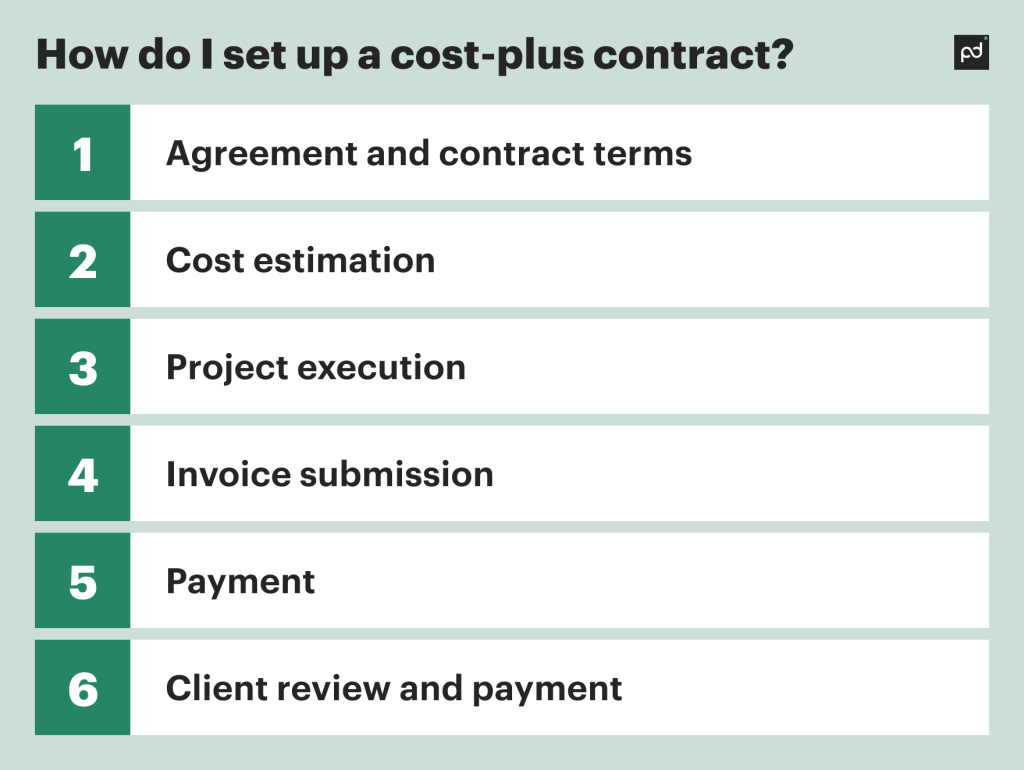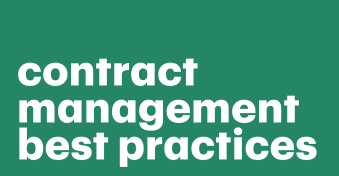Even if contracts are not your specialty, they are vital to the success of your company.
However, not all contracts work the same way, and it is critical to do some research to determine which one is best for your company.
The cost-plus contract is gaining traction, particularly in the construction industry.
It’s used for everything from constructing highways to building rockets for space travel.
We’ll discuss everything you need to know about cost-plus contracts and how to create one for your business.
Key takeaways:
- A cost-plus contract is one in which the contractor is reimbursed for the actual costs of a project plus a profit.
- Cost-plus contracts reduce contractor risk by separating profit from direct and indirect project expenses.
- Contract variations may include incentives for early completion or exceeding specifications or fee increases if project costs rise.
- A cost-plus contract may be suitable for a large, long-term project where the scope and cost are hard to determine.
What is a cost-plus contract?
A cost-plus contract is a pricing plan for a project or service.
It requires the client or project owner to pay the contractor a predetermined profit margin along with the full project costs.
This type of contract is the ideal choice for complex, long-term projects where the scope of work and final cost can change.
The contractor will usually provide an estimate of the direct and indirect expenses upfront and then provide detailed records to the client.
Direct expenses in construction projects, for instance, could be labor, raw materials, and the equipment required to complete the project.
In other sectors, such expenses are called Costs of Goods Sold (COGS).
Indirect costs, on the other hand, include project overhead costs like insurance, transportation, office rent, and other operations-related expenses.
How do cost-plus contracts work, and what’s included in them?
You can determine the profit in a cost-plus contract in a few different ways.
The contractor in a cost-plus ‘fixed-fee’ contract receives a predetermined sum of money regardless of how much the overall job ends up costing.
On the other hand, cost-plus ‘fixed-percentage’ contracts determine the contractor’s profit as a fixed percentage of the project’s total costs.
The owner of the project may insist that the cost-plus contract include a cap (maximum cost) to prevent costs from spiraling out of control.
For instance, if a contractor estimates that the job will cost around $780,000, the project owner may allocate an extra $50,000 for unforeseen events.
If the contract also includes the provision of a fixed $30,000 profit, the highest amount the contractor will receive is $860,000.
Here’s a breakdown of what usually goes into a cost-plus contract.
1. Agreement and contract terms
Both the contractor and the client sign a contract outlining the terms of their cooperation on the project or service.
2. Cost estimation
The contractor calculates all of the direct and indirect costs associated with the project.
3. Project execution
As the project progresses, the contractor incurs actual costs, some of which may have been overlooked during the initial cost estimation phase.
4. Invoice submission
The contractor sends the client an invoice covering all the expenses they incurred plus the predetermined profit.
5. Payment
After confirming the invoice’s accuracy, the client pays the contractor.
6. Transparency and reporting
One of the key aspects of a cost-plus contract is transparency.
The contractor maintains detailed records of all costs incurred and provides regular reports to the client.
This ensures that the client can verify the actual costs and the legitimacy of the expenses.
7. Change orders
These orders are important because cost-plus contracts are often used when project scopes are not well-defined.
Changes or additional work required beyond the initial scope must be documented and approved.
This often results in adjustments to the estimated costs and, therefore, the value of contract.
These orders will need to be reviewed by the client or contractor before being approved.
Dispute resolution
Disputes can arise in cost-plus contracts, especially about the justification of costs incurred.
Provisions for resolving such disputes, such as through mediation or arbitration, are usually included in the contract.
Limitations and controls
To prevent excessive costs, cost-plus contracts may include certain limitations and controls.
As we mentioned earlier, the contract might outline a cap (maximum limit) on the contractor’s profit or specify the types of expenses that can be reimbursed.
Understanding the different cost-plus contract types
Cost-plus contracts can take many different forms, each tailored to the specific needs of a given industry and set of deliverables.
Cost plus fixed fee contracts (CPFF)
This is the simplest form of cost plus agreement.
In this type of contract, the buyer pays a flat fee in addition to the actual costs incurred.
Cost plus incentive fee (CPIF)
These are performance-based contracts, as the name suggests.
The client offers a bonus payment to the contractor if they achieve or surpass their performance goals.
Timelines are the most common measurement of success, but contractors can also receive incentives for making additional cost savings or other achievements.
Cost plus a percentage of cost (CPPC)
The contractor’s payment in this type of contract is a percentage of the total project cost.
The higher the project’s costs, the higher the contractor’s fee.
This protects the contractor from the risk of rising costs like labor or research affecting deadlines.
Cost plus award fee (CPAF)
These types of agreements include a bonus payment tied to the level of service provided.
This could mean delivering a product that is exceptional, energy-efficient, or ahead of schedule.
Cost plus fixed rate
Cost-plus contracts that set labor rates upfront are rare and only used by contractors who know their costs and rates.
These contracts provide very little flexibility.
What is a cost-plus contract example?
Here’s an example of a cost-plus contract to help illustrate how it works.
The steps can help guide your contract tracking efforts from start to finish.

Step 1: Agreement and contract terms
A property developer (the client) wants to construct a new commercial building.
They approach a construction company (the contractor) to undertake the project.
Since the scope of work isn’t fully defined due to potential design changes and uncertainties, the parties agree to use a cost-plus contract.
They agree that the contractor will be reimbursed for all actual costs incurred during construction, plus a 15% profit margin.
Step 2: Cost estimation
The contractor provides an initial cost estimate based on preliminary plans and discussions with subcontractors.
They estimate that the project will cost around $1,500,000 in terms of labor, materials, and subcontractor fees.
The estimated profit margin would be $225,000 (15% of $1,500,000).
Step 3: Project execution
As construction progresses, unforeseen site conditions and design changes emerge.
These changes require adjustments to the project plan and additional labor and materials.
The contractor manages these changes effectively while maintaining detailed records of all expenses.
Step 4: Invoice submission
Upon project completion, the contractor compiles a comprehensive report detailing all actual costs incurred during construction.
This report includes costs for materials, labor, subcontractors, and any additional expenses due to design changes.
The total actual costs amount to $1,750,000.
Step 5: Payment
The contractor submits an invoice to the client, reflecting the actual costs incurred during the project plus the agreed 15% profit margin.
The invoice amount is calculated as follows:
Actual Costs: $1,750,000
Profit Margin (15%): $262,500
Total Invoice Amount: $1,750,000 + $262,500 = $2,012,500
Step 6: Client review and payment
The client reviews the detailed report and invoice provided by the contractor.
They find the expenses to be reasonable and in line with the project’s challenges and changes.
The client proceeds to make the payment of $2,012,500 to the contractor, covering the actual costs and the profit margin.
In the example, the cost-plus contract provided flexibility in managing unforeseen changes and uncertainties during construction.
The contractor received compensation for their actual costs and provided a fair profit margin for their services and expertise.
The pros and cons of cost-plus contracts
Cost-plus contracts come with their own set of advantages and disadvantages.
Here’s an overview of the pros and cons:
Pros of cost-plus contracts
Flexibility
Cost-plus contracts are particularly useful when the scope of work is uncertain or subject to change.
They provide flexibility to accommodate changes in project requirements.
This means there’s no need to renegotiate the entire agreement after the contract effective date, when the contractual provisions become binding and enforceable.
Transparency
These contracts require contractors to maintain detailed records of expenses, promoting transparency.
Clients can verify the actual costs incurred and the legitimacy of expenses.
Incentive for quality
Contractors are rewarded for focusing on delivering quality work rather than cutting corners, as their profit margin is directly tied to the actual costs incurred.
Low risk for contractors
Contractors are protected from unexpected expenses and risks.
They can pass on genuine additional costs to the client, thereby reducing their exposure to financial risks.
Client involvement
Clients have a more hands-on approach to the project’s progress.
They receive updates on expenses and contribute to the decision-making process for changes.
Cons of cost-plus contracts
Potential for higher costs
Since contractors are reimbursed for all actual costs, there is a risk that the project’s costs may rise beyond what was initially expected.
Administrative overhead
The requirement for detailed record-keeping and regular reporting can lead to increased administrative overhead for both parties.
Conflict of interest
In some cost-plus contracts, there could be a conflict of interest if the contractor’s profit is directly tied to the project’s costs.
This might lead to suspicion that contractors could inflate costs to increase their profit.
Complexity
Cost-plus contracts are often more complex to negotiate, draft, and administer compared to other contracts, such as fixed-price contracts.
Fixed-price vs. cost-plus contracts
Fixed-price contracts and cost-plus contracts are two common types of contracts used in various industries.
A fixed-price contract is one in which the price is set and predetermined based on estimated costs.
Each type has its own advantages and disadvantages, making them suitable for different project scenarios.
Fixed price contracts:
Advantages:
- Cost predictability: With a fixed price contract, the client knows the total cost upfront, providing cost predictability and easier budgeting.
- Incentive for efficiency: Contractors are motivated to complete the project within the agreed budget to maximize their profit margin.
- Less administrative work: Fixed price contracts typically require less administrative work compared to cost-plus contracts since there’s no need to track and verify actual costs.
- Client control: Clients have better control over project costs, as contractors are responsible for managing expenses within the fixed price.
Disadvantages:
- Risk for contractors: Contractors bear the risk of unforeseen costs or changes in scope, which can lead to reduced profit or losses.
- Scope changes: Changes in project scope can be challenging to accommodate without renegotiating the contract, potentially leading to disputes.
- Potential for lower quality: Contractors might cut corners to stay within the fixed budget, potentially compromising on quality.
Fixed price vs. cost plus contracts: Key differences
| Fixed price contracts | Cost plus contracts | |
|---|---|---|
| Budget | The price agreed upon does not change. The project’s final price will be the same as what was originally estimated, regardless of the actual costs | Uses an estimate of the project’s costs rather than a fixed price. |
| Profit | Does not guarantee a profit for the contractor. Profit is factored into the initial quote for a job, but the contractor covers the difference if actual expenditures are higher than anticipated | Separates profit and expenses. Profit will often be a fixed fee or a set percentage of the total project cost. |
| Risk | The contractor bears most of the risk and must keep costs within budget to avoid losing money. Initial miscalculations can hurt the bottom line later. | Puts the project owner at risk if costs exceed expectations. |
How contract management software can help you stay on top of things
Contract management often poses challenges due to its complexity and evolving requirements.
PandaDoc’s contract management software provides a comprehensive solution that streamlines every stage of the contract lifecycle.
From creation to negotiation, eSignatures, tracking, and analytics, PandaDoc empowers businesses to optimize their processes and maintain a competitive edge.
Disclaimer
PandaDoc is not a law firm, or a substitute for an attorney or law firm. This page is not intended to and does not provide legal advice. Should you have legal questions on the validity of e-signatures or digital signatures and the enforceability thereof, please consult with an attorney or law firm. Use of PandaDocs services are governed by our Terms of Use and Privacy Policy.


